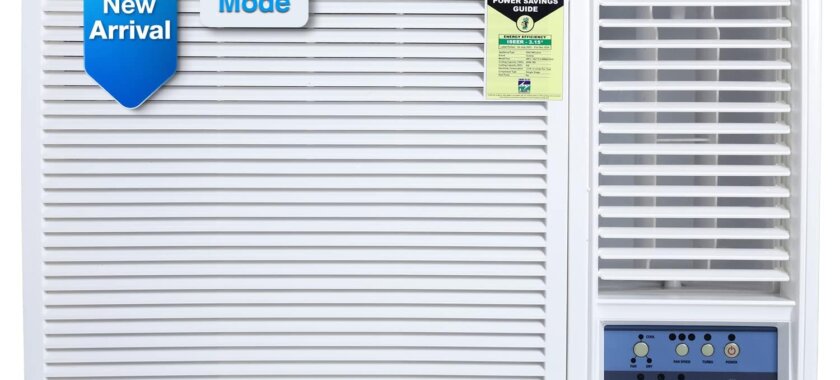Table of Contents
ToggleHow to Choose the Right Air Conditioner for Your Home: A Simple Guide
If the ceiling fan isn’t causing you trouble this summer, you’re not alone. Considering that summer has just started and the heat will increase in the coming months, buying a new air conditioner is probably a top priority. But, how do you pick the right AC for your home or office? Here’s a simple guide covering the basics of choosing the right one for you.
Types of ACs
There are two types of air conditioners, and you might have seen both in use in libraries, cafes, homes, hotels, etc. These are window AC and split AC.
Window AC:
Window AC is a single, rectangular unit and is easy to maintain and use. Its big advantage is that it is also cheap. This is because all the components are inside the same chassis and there is less chance of problems inside due to external factors.
However, window ACs can often be noisy and require thick walls (9-12 inches thick) for installation, so they may not be for everyone. Window ACs also have limited capacity and may not be the best option for larger rooms.
Split AC:
As the name suggests, in these the entire body of the appliance is divided into two parts. There is an indoor unit that is located inside your room, and there is an outdoor unit that is placed outside the wall. Since both the units are separate and connected by pipes, maintenance, and installation costs are higher here.
Split ACs are more expensive than window ACs but make less noise. These can be installed on any wall, even if the wall is thin.
Capacity
To get the right AC, the most important aspect that you need to find out first is the capacity. What capacity you need will determine whether the AC you buy will perform poorly or simply be overkill. Deciding factors include the size of the room as well as the ambient temperature, and how many walls of that room are exposed to direct sun from the outside (as these are likely to heat up quickly).
From tonnage, you calculate the capacity of the AC. You might have heard about the term 1 Ton AC or 1.5 Ton AC. In the field of air conditioners, 1 ton is the amount of energy required to completely melt 1 ton (1,000 kg) of ice into water. For small rooms, you may be satisfied with a 1-ton AC, but for living rooms, small offices, and other larger areas, you may need a 1.5-ton AC.
Energy Ratings
ACs are notorious for contributing a large number to your electricity bill, which is why many people use them only when necessary. However, whether you plan to use the AC sparingly or all the time, you can control these costs by choosing a model with a good energy rating. Every AC will come with a 5-star scale by the Bureau of Energy Efficiency. The rating here determines how good your AC is with its power efficiency. Always try to choose a 5-star model as this will help you get the lowest usage cost in the long run.
Inverter and Non-Inverter ACs
An inverter converts direct current (DC) to alternating current (AC) and when it comes to air conditioners, you can find both inverter AC and non-inverter AC. In non-inverter AC the compressor runs at a fixed speed. It can be either turned on or off. During use, the compressor will turn on and run until your room reaches the required temperature, then turn off, only to turn on and cool down again when the temperature gets hot again.
Inverter AC converts the AC from your wall socket to DC and then back to AC for the compressor that powers the appliance. Its purpose is to enable more controlled functioning of the compressor, which lets users manage the temperature better and more efficiently.
Also Read:- Top Tips For Smooth AC (Air Conditioner) Installation
Despite being more expensive, inverter ACs provide more consistent temperatures and produce less noise. If you plan to use the AC continuously throughout the year and it is a reasonable, long-term investment for you then look for an inverter AC. If you plan to use the appliance sparingly, a regular, non-inverter AC may be enough for you.
Other Features
There are some other features you may need and looking for these will narrow your search even further. Some ACs will come with filters and this will help in keeping the air clean and cool at the same time. Others may also serve as heaters. If it gets very cold in your area during the winter, it might be worth a look. Other features like sleep timer, fan swing mode, etc. are common in most ACs these days but do check for these.
Conclusion
Choosing the right air conditioner in India can make a big difference to your comfort and energy bills. First of all, decide between window and split AC based on the installation requirements. Then, consider the room size and ambient temperature to determine capacity, which is usually measured in tons. Opt for a higher energy rating to save electricity bills and decide between inverter and non-inverter AC based on your usage pattern. Inverter ACs provide better temperature control and energy efficiency but come at a higher initial cost. Look for additional features like filters for clean air and heating capabilities for cooler months. By considering these factors, you can find the best AC to keep you cool and comfortable all summer long while keeping costs under control.



Leave a Reply